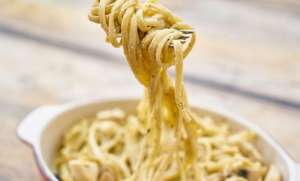You sit down at a restaurant, ready for a great meal. You open the menu, scan past the chicken and fish, and land on the steak section. Then, your eyes glaze over. Filet, Ribeye, New York Strip, T-Bone... what does it all mean? It feels like you need a dictionary just to order dinner.
If you've ever felt lost trying to pick a steak, you're not alone. Understanding the different types of steak cuts can feel intimidating. But it's actually pretty simple once you know what to look for, and it will completely change how you order and enjoy a good steak. You'll learn what makes each steak special, so you can find the perfect one for you.
Why Do Steak Cuts Even Matter?
So what's the big deal with all these names? It all comes down to where on the cow the meat is from. Think of it this way: some muscles work hard all day, while others just hang out. This simple fact completely changes the steak beef on your plate.
Muscles that get a lot of exercise, like those from the leg or shoulder, are tougher. But that hard work develops a deep, beefier flavor. On the flip side, muscles that do very little work, like the ones along the spine, are incredibly tender and soft. These are often the most expensive steak varieties.
Then there's the fat, which chefs and steak lovers call marbling. Those little white specks of fat that run through the muscle melt during cooking. This process keeps the steak juicy and packs it with flavor, separating a heavily marbled cut from a leaner cut. So, you often have a choice between melt-in-your-mouth tenderness or big, bold beefy flavor.
A Guide to the Most Popular Types of Steak Cuts
Let's break down the lineup you're most likely to see on a menu. Once you get these, you'll be ordering like a pro. Each one offers a different experience, from texture to taste.
1. Filet Mignon
If you're looking for the most tender steak, this is it. The filet mignon or eye fillet comes from the tenderloin, a long muscle that does almost no work. This specific tenderloin cut is famous for a buttery, soft texture that you can often cut with a fork.
Because it's so lean, it has a milder beef flavor compared to other cuts. The filet is a cylindrical muscle, so it's often cut thick and is best cooked rare to medium-rare to protect its delicate texture. This is the go-to steak for people who value softness above all else and is a staple at any classic steakhouse.
2. Ribeye
The ribeye is the steak for flavor lovers. Cut from the rib section, this steak is known for its incredible marbling. All that fat renders down as it cooks, creating a rich, juicy, and intensely beefy bite.
Many believe the best part of a ribeye is the cap of meat surrounding the center, known as the spinalis dorsi. A bone-in ribeye often has even more flavor, as the bone insulates the meat during cooking. The impressive prime rib roast is the same cut, just not sliced into individual steaks.
3. New York Strip
Can't decide between tenderness and flavor? The New York strip offers a fantastic balance of both. Also known as a loin steak or strip steak, it comes from the short loin and has a tighter texture than a ribeye with a satisfying chew.
It's not as fatty as a ribeye, but it still has enough marbling to give it a solid beefy taste. This cut also goes by names like Kansas City strip, York strip, or shell steak. This is a workhorse steak with a distinct rectangular shape that never disappoints.
4. T-Bone
Why choose one steak when you can have two? A T-Bone is exactly what it sounds like: a steak with a t-shaped bone running through the middle. That bone separates two different types of steak cuts.
On one side, you get a flavorful New York strip. On the other, you get a smaller piece of the buttery filet mignon. The bone itself adds more flavor during the cooking process, making it a fun and delicious steak option.
5. Porterhouse
The porterhouse is the T-Bone's bigger, more impressive sibling. The porterhouse steak is cut from the same area of the short loin, but it's larger and must include a bigger portion of the tenderloin. According to the U.S. Department of Agriculture, the filet section must be at least 1.25 inches wide.
This is a steak bigger than most, perfect for someone with a big appetite or for sharing. You get the same great combination of the strip steak and filet, just more of the beef tender. It's an indulgent choice for a special occasion.
6. Top Sirloin
The top sirloin steak is a fantastic everyday steak. It's much more affordable than the premium cuts, but it still packs a good amount of beefy flavor. It comes from a large muscle that does a fair bit of work, so it's a leaner cut than a strip or ribeye.
But don't let that fool you. When cooked properly, a top sirloin can be wonderfully juicy and satisfying. It's a versatile steak that's great for grilling on a Tuesday night without breaking the bank and works well in many steak recipes.
7. Flat Iron
The flat iron steak is a bit of a hidden gem that has become more popular recently. This iron steak comes from the cow's shoulder blade, a region known for tougher cuts like the chuck steak. However, butchers found that by removing a tough piece of connective tissue, they were left with a surprisingly tender steak.
It's very well-marbled and has a deep, rich flavor that is worth seeking out at butcher shops. The flat iron's uniform thickness makes it easy to cook evenly, and its price point makes it an incredible value. It's great on its own or sliced up for sandwiches and salads.
8. Flank Steak
Flank steak is a long, lean cut from the abdominal muscles of the cow. It's known more for its great flavor than its tenderness. The muscle fibers of this long muscle are thick and coarse, which makes it perfect for soaking up marinades.
The secret to a great flank steak is to cook it hot and fast to medium-rare. Then, you must slice it very thinly against the grain. This breaks up the tough muscle fibers and makes it much easier to chew. It's the classic choice for steak fajitas or a hearty stir-fry.
9. Skirt Steak
Similar to flank steak, skirt steak is a long, thin cut prized for its explosive beefy flavor. It's actually even more intense than flank steak. It comes from the diaphragm muscle, so it has a loose, open grain that acts like a sponge for marinades.
Skirt steak is the traditional cut for fajitas, and for good reason. It cooks in just a few minutes over high heat. Just like flank steak, be sure to slice it thinly against the grain to maximize tenderness.
10. Tomahawk
If you're looking for a steak that makes a statement, this is it. A tomahawk steak is basically a massive rib steak with a long, frenched rib bone left attached, making it look like an axe. This cut, also called a bone-in ribeye with the rib bone left on, is designed to impress.
Beyond the looks, it delivers all the rich, marbled flavor you'd expect from a high-quality ribeye. That big bone also helps insulate the meat while it cooks and adds a bit of extra flavor. This is a fun, over-the-top steak that's perfect for sharing and creating a memorable meal.
Lesser-Known Cuts Worth Finding
Beyond the classics, some other cuts offer amazing flavor and value. Many of these are favorites among butchers and chefs. Exploring these steak varieties can lead to delicious new discoveries.
The hanger steak, once known as the butcher's cut because they would often keep it for themselves, offers a rich, beefy taste. It hangs from the diaphragm and has a coarse texture similar to skirt steak, making it great for marinades. The Denver steak is another gem from the chuck shoulder, surprisingly tender for its location.
For a more budget-friendly option, there is cube steak. This tough cut, usually from the top round or sirloin, is tenderized by a meat mallet. This process, which creates cube-shaped indentations, is how you meat tenderize it for dishes like chicken-fried steak.
A Quick Guide to Choosing Your Steak
With all these options, how do you pick? It really comes down to what you're in the mood for. Here's a quick table to help you decide:
|
If You Want... |
The Best Steak Is... |
Why It Works |
|
Ultimate Tenderness |
Filet Mignon |
Comes from a muscle that does no work, resulting in a buttery texture. |
|
Rich, Fatty Flavor |
Ribeye or Tomahawk |
Extensive marbling melts during cooking for maximum juiciness. |
|
A Balance of Both |
New York Strip |
Offers great beef flavor with a satisfying chew that isn't too fatty. |
|
Two Steaks in One |
T-Bone or Porterhouse |
You get a piece of the flavorful strip and the tender filet. |
|
Great Value |
Top Sirloin or Flat Iron |
Affordable cuts that deliver excellent beef flavor. |
|
Intense Beefiness |
Skirt or Hanger Steak |
These cuts have a strong, pronounced beefy taste perfect for marinades. |
There's really no right or wrong answer. The best steak is the one that you enjoy the most. Don't be afraid to try something new on the menu next time.
Cooking Methods to Get It Right
Choosing the right cut steaks is only half the battle; the cooking method is just as important. The way you cook steak can drastically change the outcome. Mastering a few techniques will help you get that perfect restaurant-quality result at home.
A pan sear in a very hot cast iron skillet is a fantastic way to develop a deep brown crust. Get the iron skillet smoking hot, add a little oil, and sear the steak for a few minutes on each side. For thicker cuts, you can finish cooking it in the oven.
Grilling over a hot grill is a classic method that imparts a smoky flavor. For many steak lovers, achieving the perfect medium rare is the goal, as it offers the best balance of tenderness and flavor. Another popular cooking method is the reverse sear, ideal for thick steaks like a Tomahawk or porterhouse, where you cook the steak slowly in the oven first and then sear it at the end.
A steakhouse menu no longer has to be a guessing game. By knowing just a little about the main types of steak cuts, you can order with confidence and get a meal you truly love. Whether you crave the tenderness of a filet, the rich marbling of a ribeye, or the balanced bite of a New York strip, there is a perfect steak out there waiting for you.
From how to cook t-bone to selecting a great flap steak, you have the knowledge to go find it. Exploring all the different steak varieties is a delicious journey of discovery. Next time you fire up the grill or head to a steakhouse, you'll be ready to choose the perfect cut.






